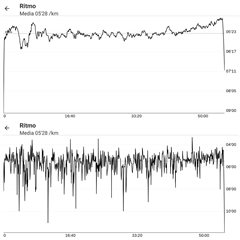I've done a run with Fenix 6 Pro solar and my smartphone running Sports tracker. The smartphone was held in my right hand, just near the Fenix.
Here are graphs of pace. Guess which is Garmin...

Note that overall pace is the same, 5.28min/km, but instant pace was perfect on the phone (with 1s scale and small variations) and unuseful on Fenix (real pace constant and shown pace +-2min).
My question: is the phone more accurate due to the use of GPS+phone cells to calculate the position?


